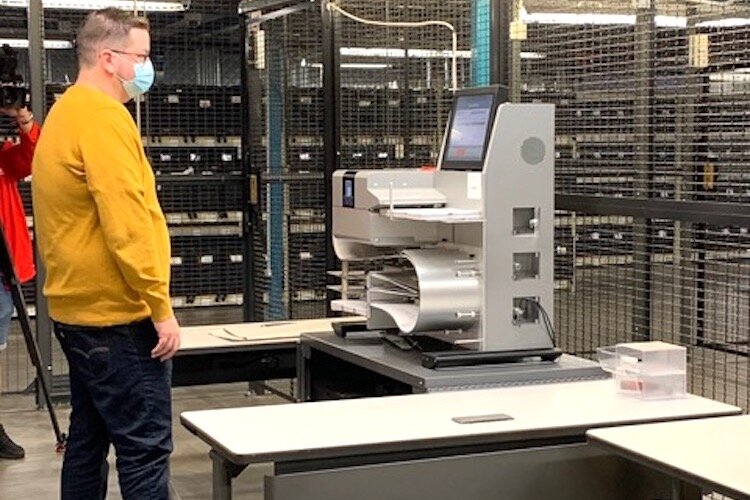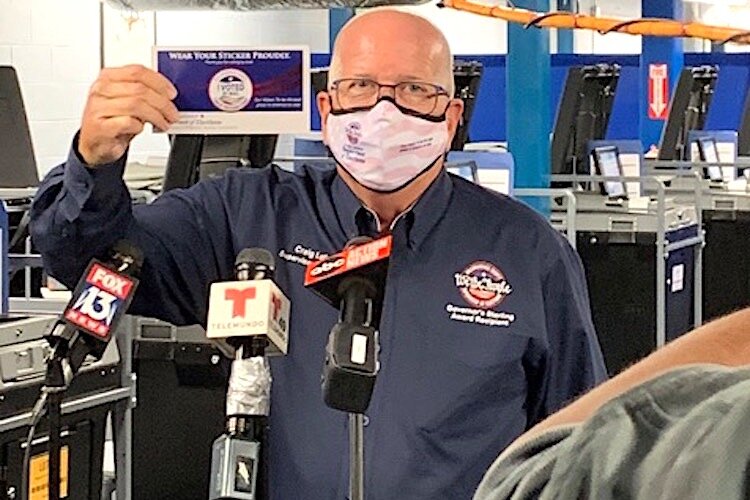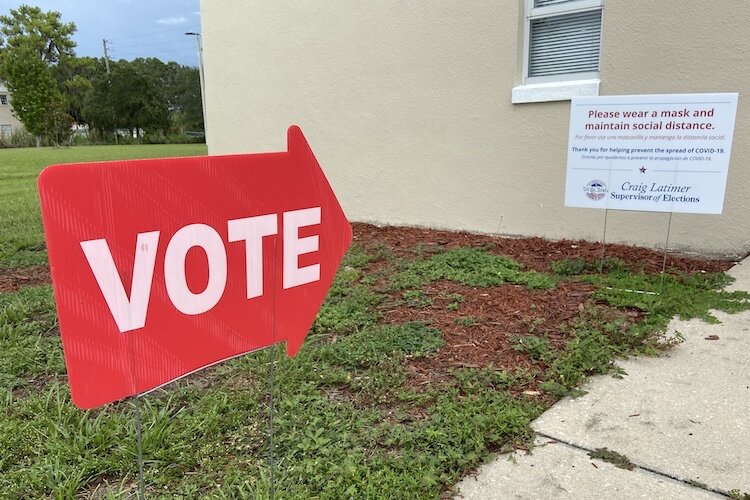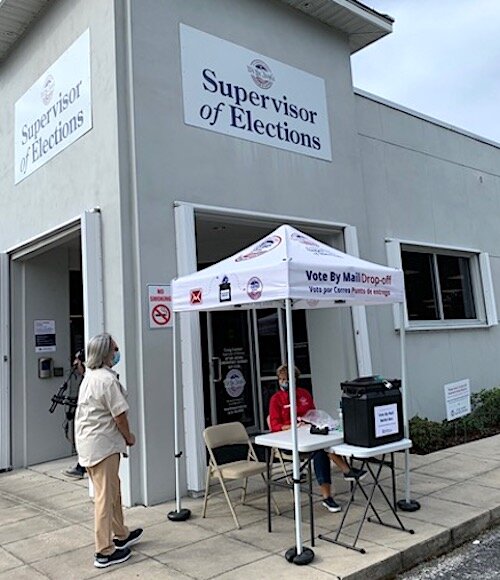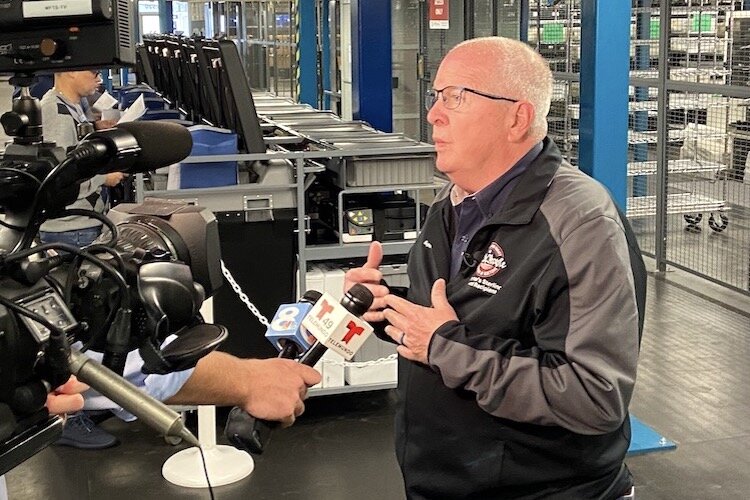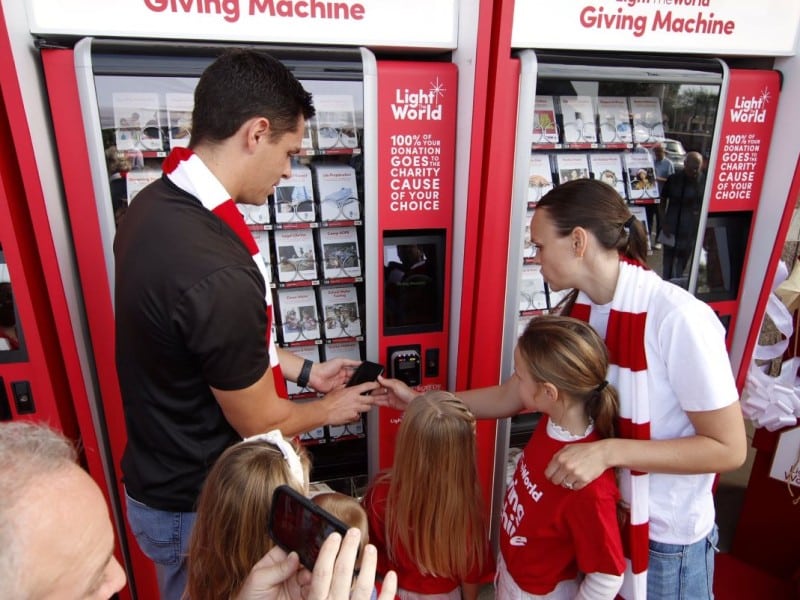Florida’s top elections officials say voting process is safe, secure
With confusion and uncertainty swirling nationally around the sanctity of elections, 83 Degrees Media hones in on the safeguards, protocols, and behind-the-scenes process of running a local election in Florida.
November 3rd will undoubtedly bring its own unique drama for historians and pundits to analyze for years to come, but local voters should know that the infamous 2000 presidential election debacle in Florida with hanging and pregnant chads led to a series of significant election reforms that resulted in new equipment, additional education for supervisors of elections and poll workers, as well as voter education initiatives and layers of safeguards.
Today, Florida voters can rest assured that the election process is safe and secure, according to Secretary of State Laurel M. Lee, a former Thirteenth Judicial Circuit Judge in Hillsborough County, and Hillsborough County Supervisor of Elections Craig Latimer, the 2020 president of the Florida Supervisors of Elections, the statewide association of Florida’s elections officials, and a former Major in the Hillsborough County Sheriff’s Office.
Three options, one vote
Voters have three options available to them, and in Hillsborough County, all three have a paper trail in case the results are unclear or become disputed.
All registered Florida voters have the option to vote-by-mail or vote in person in the early voting period from October 19th through November 1st or vote the day of the election, on November 3rd.
No, it is not permissible to vote more than once, but if a voter votes in person and by mail, the first ballot received will be the one that is counted, and the other will be automatically rejected.
Likewise, if a person tries to vote twice in person, the system will reject the voter. If the person feels this rejection was in error — or if for any reason the voter is prevented from voting, including not having proper ID — the voter should request a provisional ballot. That ballot’s eligibility to be counted will be determined within 30 days, and this process can be tracked easily by the voter.
Behind the scenes is a well-oiled, often-tested machine.
Craig Latimer, the Hillsborough Supervisor of Elections, and his team are preparing all year to ensure the integrity of 239 polling sites available in the county on Election Day and 26 early voting sites that open for two weeks prior to Election Day, plus the printing and mailing of sample and official ballots, the repeated testing for accuracy of voting machines, and properly training more than 2,000 county poll workers.
Historically, about a third of Hillsborough County voters have voted in each of the three ways. This year portends some new trends, largely driven by concerns over potential exposure to COVID-19. If the primaries are any indication, the portion of voters who opt for vote-by-mail ballots will be up. In August, 68% of Hillsborough County votes were cast by mail, according to Latimer, and 12% voted early. In other words, 80% of voters voted before Election Day.
Vote-by-mail — it counts, and it’s secure
Voting by mail has already begun in Florida. With about 350,000 ballots already mailed out in Hillsborough County alone, Latimer says that more than 30,000 completed ballots were mailed back in during the first week.
Registered voters can request a ballot be sent to them through October 24th, or can pick one up in person after that date. The ballots must be received by 7 p.m. on Election night, November 3rd. Florida doesn’t recognize postmarks so ballots that arrive after November 3rd won’t be counted.
Voting by mail is easy to track. Voters can “see” when their ballot was received and accepted by checking the Supervisor of Elections website online, opting in for text alerts, or by calling the elections office. Ballots can be mailed in or dropped off at secure dropbox receptacles at public libraries and other early voting sites and at official election offices.
“Vote-by-mail is something we know how to do in Florida and we know how to do [it] with a high level of integrity,” said Florida Secretary of State Laurel Lee in a recent virtual voter education event hosted by AARP Florida. Lee is responsible for the elections at the state level.
Neither Secretary Lee nor Supervisor Latimer expresses concerns about postal delays — Latimer notes he is seeing many ballots come back within days of being mailed out.
Another concern voters have about vote-by-mail is that the votes are only counted if there is a margin large enough to make a difference in the outcome of a given race. This is actually a myth.
Florida law allows the counties to begin processing vote-by-mail ballots 22 days before the election, or once Logic and Accuracy testing is complete. The tabulations are put in a queue until 7 p.m. on the night of the election and are the very first votes reported on Election Night, along with the early voting results.
The small number of vote-by-mail ballots that are received late afternoon on Election Day are counted a bit later after they are verified and tabulated.
Signature verification
Vote-by-mail ballots are verified by a team of election workers comparing the signature on the back of the mail-in ballot envelope with the voter’s signature on file.
Concerned your signature won’t match the signature on file? You can fix that easily — either by updating your voter registration online where your signature will be pulled from your most recent driver’s license, or on paper through the Supervisor of Elections office and re-filing your signature there.
Hillsborough County voters are asked to include contact information on their vote-by-mail ballot envelopes — this allows election officials to contact you if your signature does not match — or if you forgot to sign the return envelope. If a signature is in doubt or missing, the supervisor’s office can then contact the voter, who can “cure” their signature and validate their ballot.
The rejection rate, Latimer says, is tiny, “less than .2 of 1%,” and about half of the initially rejected ballots are typically cured. In the most recent primary in August, 346 voters of the 700 ballots flagged cured their signature. “So don’t ignore us,” Latimer says, encouraging people to include their contact information and to respond if they get a follow-up communication from the supervisor’s office.
Safeguards in place to ensure the integrity of the vote
Voter fraud and foreign interference are what Americans view as two of the biggest threats to safe and fair elections in the United States, according to a Hill/HarrisX poll conducted earlier this year.
Here are some of the safeguards in place in Florida that should provide some reassurance to that end:
- Voter registration in Florida requires government-issued identification, proof of citizenship, and proof of address;
- Vote-by-mail ballots can only be requested by registered voters and are only sent to those who request them;
- All ballots in Hillsborough County are paper and they are stored for 22 months.
- As mentioned above, redundancies or duplicate ballots are eliminated because the system automatically rejects a ballot if a voter has been counted as having already voted by any means.
- Voters are always entitled to request a provisional ballot if they have an issue when they go to vote. A provisional ballot can be filled out at the polling place and will be held for verification before being counted.
- The servers for all of the vote tabulation systems are separate, stand-alone air gap servers. None is connected to each other or to the Internet or to the Intranets in every county in the state, as required by state law.
In addition, Florida is a member of a system called Eric, a nonprofit consortium that aggregates and cross-checks its 29 member-state drivers’ license info and voter registration data. It also identifies deceased voters, voters who have moved, and other vital statistics so that voters cannot potentially vote in more than one state. In addition, the database enables states to identify potentially eligible but not registered voters and to reach out to them to encourage them to register. Florida is doing this.
Cybersecurity is enforced across all of the servers in every Florida county, which are monitored by Albert sensors that are designed to detect any intruders or malicious activity or events. The monitoring systems are operated through a contractor with the U.S. Department of Homeland Security and monitor all of the traffic in and out of the supervisors of elections offices across the country.
Each party and candidate can assign poll watchers to polling sites who can talk to the polling clerk. As for police serving as poll watchers or otherwise monitoring the vote (something encouraged by President Trump), this is strictly prohibited by Florida statute.
A similar bipartisan participation process can be requested for voting at places like assisted living facilities, to prevent vote harvesting and ensure the voters are making their own choices on their ballots.
A formal Logic and Accuracy test is run with predetermined outcomes using specially marked ballots to ensure that the DS200 ballot scanners used in each of the precincts for early voting and Election Day voting as well as the high-speed scanners used for vote-by-mail ballots are accurate. The latest testing happened on September 30th in Hillsborough County with news media and members of the public watching; the machines got the thumbs up.
100% of Hillsborough County votes are audited electronically through ClearAudit, a separate, certified system not connected to the tabulating machines, to check for any discrepancies. Across Florida, a minimum of 20% of all ballots must be audited.
A 0.5 discrepancy would trigger a machine recount. And if there was still a discrepancy of 0.25%, a manual recount would follow.
Partisanship does not seem to play a role
Despite voter disenfranchisement issues like the as-of-yet unresolved issue of allowing felons to vote in the state, the Republican Secretary of State, Laurel M. Lee, and Hillsborough County Supervisor of Elections Craig Latimer, a Democrat, as well as the supervisors of elections across the state, say the actual process of elections is nonpartisan.
“We understand elections are partisan, but election administration is not. The Department of State and your local Supervisor of Elections are there to serve all Florida voters regardless of your party affiliation,” says Secretary Lee. “Know that we are a resource and we’ll get you anything you need to help facilitate your voting and your participation in our democracy.”
Political scientist and former USF Professor Susan MacManus, who studies elections and democracy issues, agrees.
“There is no guarantee that something can’t go wrong,” MacManus says. “But the effort has been very bipartisan from both Democratic and Republican counties to come together and deal with this election; each supervisor is dealing with the same issues.”
As for mitigating misinformation, the third-biggest concern identified in the Hills/HarrisX poll, everyone involved in the elections process says the same thing: Turn to legitimate sources. Your local supervisor of elections has a website with a plethora of information. Start there.
Here are links to Tampa Bay Area Supervisor of Elections offices:

